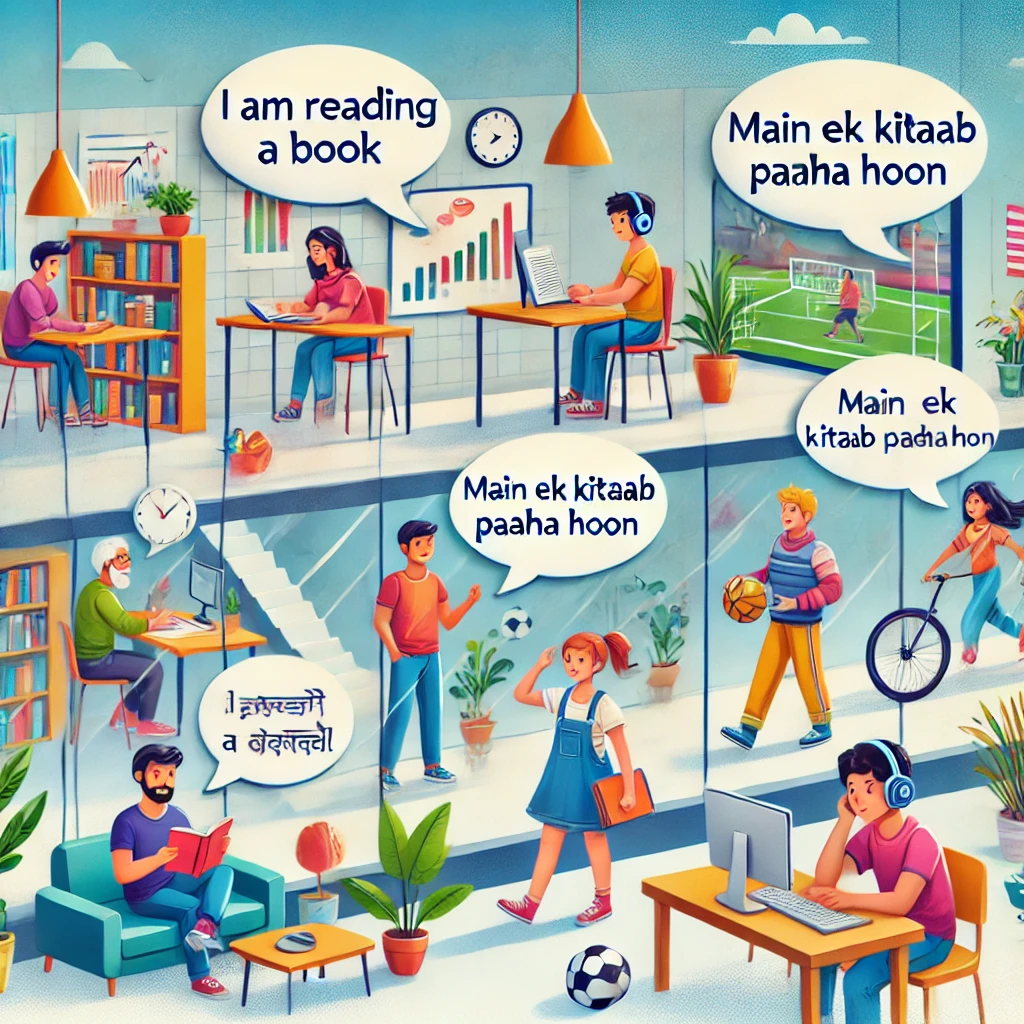English Explanation:
Teaching English to rural Indian children often requires clear, concise instructions. The Present Perfect Continuous tense (has/have been + verb-ing) is incredibly useful for conveying ongoing actions, especially when giving directions or instructions. It emphasizes the duration and continuity of an activity. For instance, instead of saying "You cleaned the board," (Simple Past), using "You have been cleaning the board" (Present Perfect Continuous) implies a sustained effort, possibly still ongoing. This nuanced understanding helps students grasp the importance of sustained effort in learning a language. Using this tense while giving instructions helps bridge the gap between the theoretical understanding of grammar and practical application, making learning more engaging and relevant to their daily lives. We focus on contextualizing the tense within everyday tasks like cleaning the classroom, preparing for a lesson or completing assignments. This approach ensures students internalize the tense naturally and accurately. In 2024, emphasizing functional grammar through real-world applications remains crucial for effective language acquisition.
Hindi Explanation:
गाँव के बच्चों को अंग्रेज़ी सिखाते समय, स्पष्ट और संक्षिप्त निर्देश देना बहुत ज़रूरी होता है। Present Perfect Continuous tense (has/have been + क्रिया का ing रूप) निर्देश या दिशा-निर्देश देते समय बहुत उपयोगी होता है। यह किसी क्रिया की अवधि और निरंतरता पर ज़ोर देता है। उदाहरण के लिए, "तुमने बोर्ड साफ़ किया" (Simple Past) कहने के बजाय, "तुम बोर्ड साफ़ कर रहे हो" (Present Perfect Continuous) कहने से यह पता चलता है कि यह एक निरंतर प्रयास है, जो अभी भी चल रहा हो सकता है। इस सूक्ष्म समझ से छात्रों को भाषा सीखने में निरंतर प्रयास के महत्व को समझने में मदद मिलती है। निर्देश देते समय इस काल का प्रयोग व्याकरण की सैद्धांतिक समझ और व्यावहारिक अनुप्रयोग के बीच की खाई को पाटने में मदद करता है, जिससे सीखना अधिक आकर्षक और उनके दैनिक जीवन के लिए प्रासंगिक बन जाता है। हम कक्षा की सफाई, पाठ की तैयारी या असाइनमेंट पूरा करने जैसे रोज़मर्रा के कामों में इस काल को प्रासंगिक बनाकर समझाने पर ध्यान केंद्रित करते हैं। यह तरीका सुनिश्चित करता है कि छात्र इस काल को स्वाभाविक और सही ढंग से आत्मसात कर लें। 2024 में, वास्तविक दुनिया के अनुप्रयोगों के माध्यम से कार्यात्मक व्याकरण पर जोर देना प्रभावी भाषा अधिग्रहण के लिए महत्वपूर्ण है।
| English | Hindi | Roman Hindi |
|---|---|---|
| They have been practicing their dialogues. | वे अपने संवादों का अभ्यास कर रहे हैं। | Ve apne sanvadon ka abhyas kar rahe hain. |
| She has been reading this book. | वह यह किताब पढ़ रही है। | Wah yah kitab padh rahi hai. |
| We have been learning new words. | हम नए शब्द सीख रहे हैं। | Hum naye shabd sikh rahe hain. |
| He has been writing a story. | वह एक कहानी लिख रहा है। | Wah ek kahani likh raha hai. |
| You have been making progress. | तुम प्रगति कर रहे हो। | Tum pragati kar rahe ho. |
| I have been teaching English. | मैं अंग्रेज़ी पढ़ा रहा हूँ। | Main Angrezi padha raha hun. |
| They have been helping each other. | वे एक-दूसरे की मदद कर रहे हैं। | Ve ek-dusre ki madad kar rahe hain. |
| She has been listening attentively. | वह ध्यान से सुन रही है। | Wah dhyan se sun rahi hai. |
| We have been working hard. | हम कड़ी मेहनत कर रहे हैं। | Hum kadi mehnat kar rahe hain. |
| He has been improving his pronunciation. | वह अपने उच्चारण में सुधार कर रहा है। | Wah apne uchcharan mein sudhar kar raha hai. |





